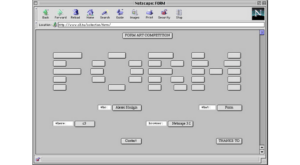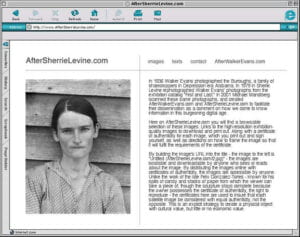New Media Art
According to the author, new media art wsa not defined by the technologies related to the Internet, but was defined as arts media by New Media Artists. Living in nowadays, different from the time when the auther worte this article, I believe that New Media can be defined as a kind of art that utilize many technologies of Internet, and can be all kinds of forms such as videos, websites and so on.
When talking about New Media Art, we always think about the concept of art and its different forms, but the auther provided us another perspective of understanding New Media Art, which is to consider it as a movement. New Media Art can be understand as the Inheritance of Dadaism and other art history, which is a respond to current development process of technology. It is also a worldwide movement, and reflecsthe increasingly global nature of the art world as a whole.
Art Historical Antecedents, Themes, Tendencies

– Form Art
Russian artist Alexei Shulgin’s “Form Art” (1997), which used HTML buttons and boxes as the raw material for monochromatic compositions, is at first glance a purely formal study of certain aspects of HTML. But it was also absurd: “Form Art” transformed the most bureaucratic, functional, and unloved aspects of the web into aesthetic, ludic elements.
Alexei Shulgin (Алексей Шульгин; born 1963) is a Russian born contemporary artist, musician, and online curator. Working out of Moscow and Helsinki, Shulgin established the Immediate Photography Group in 1988 and started his career in this area of study. After 1990, he shifted his interests from photography to the Internet, and consequently, in 1994, founded Moscow-WWW-Art-Lab WWW Art Lab, collaborating with many artists from London and Slovenia. That very same year, the artist created an online photo museum called “Hot Pictures”. In 1997, Shulgin continued his work with the invention of Form Art (Form Art), and later that year the introduction of the Easy Life website. In 1999, Shulgin became Webmaster at FUFME, Inc. Since 2004, Shulgin has been a co-owner of Electroboutique.
At that period of time, the Soviet Union was collapsed, which made artists in that region had a unique perspective on the Internet’s dot com era
transformation, because they were living in societies making the transition from Socialism to Capitalism, a phenomenon that in many ways mirrored the privatization of the Internet. Because of the relatively inexpensive cost to produce the net art, this form of art got more and more popular among artists. It was commissioned in 1997 by Hungarian arts organization C3, is an interactive website navigated aimlessly through a series of web forms. “‘Forms’ are HTML conventions that appear in the guise of menus, checkboxes, radio buttons, dialogue boxes and labels; they are often used when filling out web-based applications, surveys or questionnaires.

– After Sherriet Levine
Mandinbreg launched AfterWalkerEvans.com and AfterSherrieLevine.com, two identical websites on which I made freely available high-resolution scans of Walker Evans images rephotographed by Sherrie Levine. These digital images are accessible to anyone, and while they accrue cultural value, they retain little to no economic value. The site links to high-resolution, exhibition-quality images and certificates of authenticity to be signed by the downloader, and includes framing and exhibition directions.
Michael Mandiberg (born December 22, 1977) is an American artist, programmer, designer and educator.
In 1979, an artist named Sherrie Levine took some photos of Depression-era Alabama sharecroppers — not by lugging her camera gear to an Old Sharecroppers’ Home on visiting day, but by photographing existing photographs. And not just any photos: these were well-known images captured by Walker Evans, the much-lauded chronicler (along with writer James Agee) of poverty and hopelessness in mid-1930s rural Alabama. Levine had located the photos in an exhibition catalog. Comes now the digital age and New York artist Michael Mandiberg, who has photographed Levine’s photographic copies of Walker’s catalog images and posted the results online at AfterSherrieLevine.com for anyone to download and print. Mandiberg also provides a downloadable “certificate of authenticity” specifying that images printed and framed according to precise directions are genuine Mandiberg works. The publish of Mandiberg’s work was in 2001, that was the time when the alternative of art works were hard to be limited. Artists have always influenced and imitated one another, but in the twentieth century various forms of appropriation, from collage to sampling, emerged as an alternative to ex nihilo creativity. Enabled by technologies of mechanical reproduction, artists began to use found images and sounds in their work.
Leave a Reply